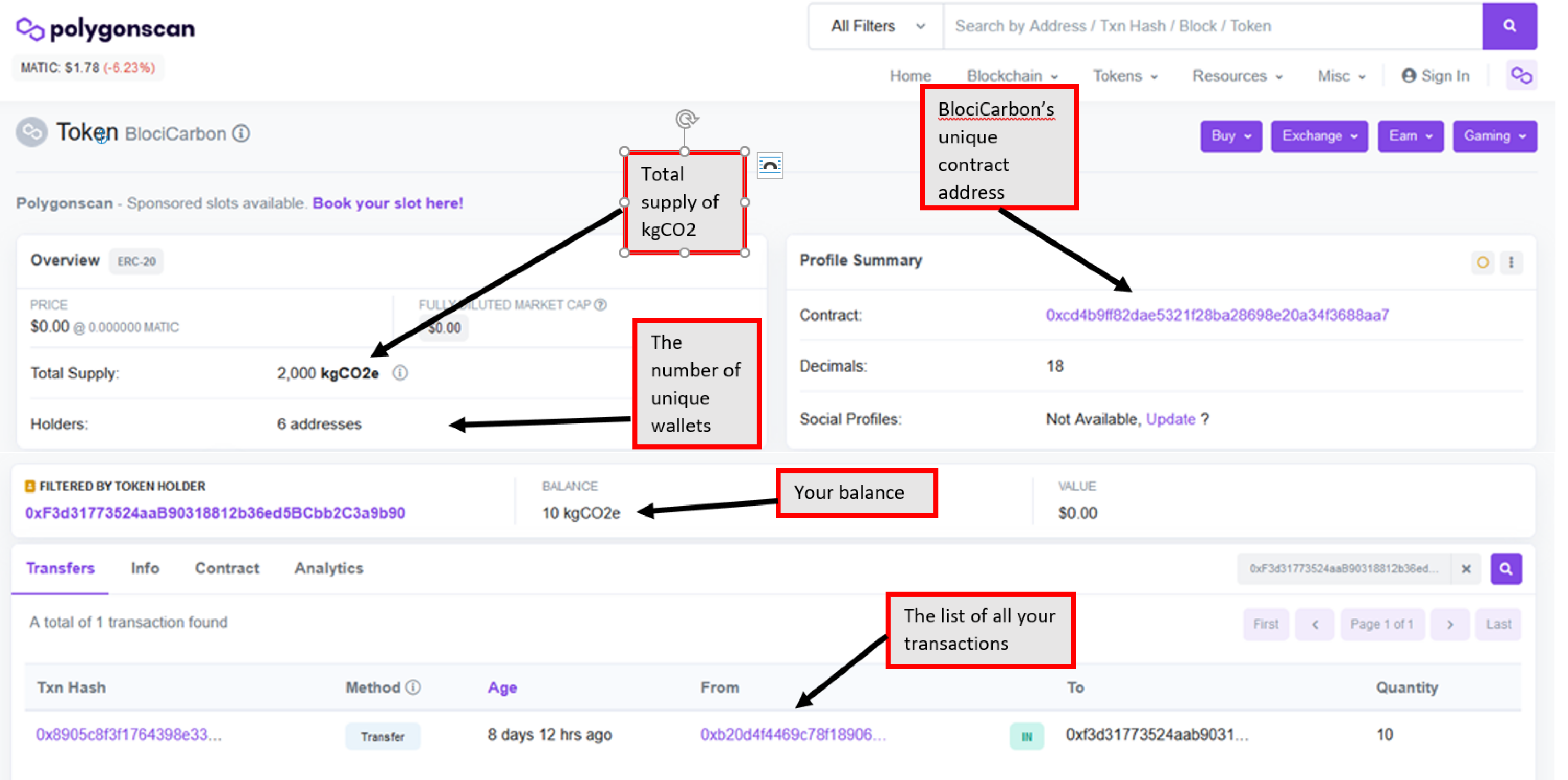FAQs
What is the BlockChain?
- "we can actually have a look at the blockchain and see evidence of what's going on"
How is BlockChain Technology used by BlociCarbon?
How does BlociCarbon keeping low environmental impact at its heart?
Bloci has no offices and its website is hosted at green data centres. We utilise a highly efficient Proof-of-Stake Blockchain (PoS) Technology which is by far the most eco-friendly method to achieve a virtually 'paperless' service. The offset we buy is from UK based farms which are required to be Carbon Neutral.
How eco-friendly is your website?
How eco-friendly is the Blockchain you use?
We use an eco-friendly blockchain called Polygon.
Polygon’s PoS validators consume electricity energy which is multiple orders of magnitude below PoW-based blockchain miners and that translates to more eco-friendliness and considerably fewer carbon emissions. Unlike PoW systems, over time, it can be reasonably predicted that with technical improvements in node technology, our validators will become more efficient in both validating transactions and consuming electricity accordingly.
How can the Blockchain be independently viewed?
https://polygonscan.com/token/0xCD4B9Ff82Dae5321f28BA28698E20A34F3688AA7
How can Individual Unique Wallets be independently viewed?
Individual unique blockchain addresses can be independently viewed by cutting and pasting the following link into any web browser and adding your unique blockchain address to the end of the link
https://polygonscan.com/token/0xcd4b9ff82dae5321f28ba28698e20a34f3688aa7?a=uniqueWalletAddressHere
How are carbon dioxide emissions calculated using the Flight Carbon Calculator?
What are Scope 1, Scope 2 and Scope 3 Emissions?
● Scope 1 (direct emissions) emissions are those from activities owned or controlled by your organisation. Examples of Scope 1 emissions include emissions from combustion in owned or controlled boilers, furnaces and vehicles; and emissions from chemical production in owned or controlled process equipment.
● Scope 2 (energy indirect) emissions are those released into the atmosphere that are associated with your consumption of purchased electricity, heat, steam and cooling. These indirect emissions are a consequence of your organisation’s energy use, but occur at sources you do not own or control.
● Scope 3 (other indirect) emissions are a consequence of your actions that occur at sources you do not own or control and are not classed as Scope 2 emissions. Examples of Scope 3 emissions are business travel by means not owned or controlled by your organisation, waste disposal, materials or fuels your organisation purchases. Deciding if emissions from a vehicle, office or factory that you use are Scope 1 or Scope 3 may depend on how you define your operational boundaries. Scope 3 emissions can be from activities that are upstream or downstream of your organisation.
What does NGO stand for?
● A non-governmental organization is an organization that generally is formed independent from government. They are typically non-profit entities, and many of them are active in humanitarianism or the social sciences; they can also include clubs and associations that provide services to their members and others (from Wikipedia)





